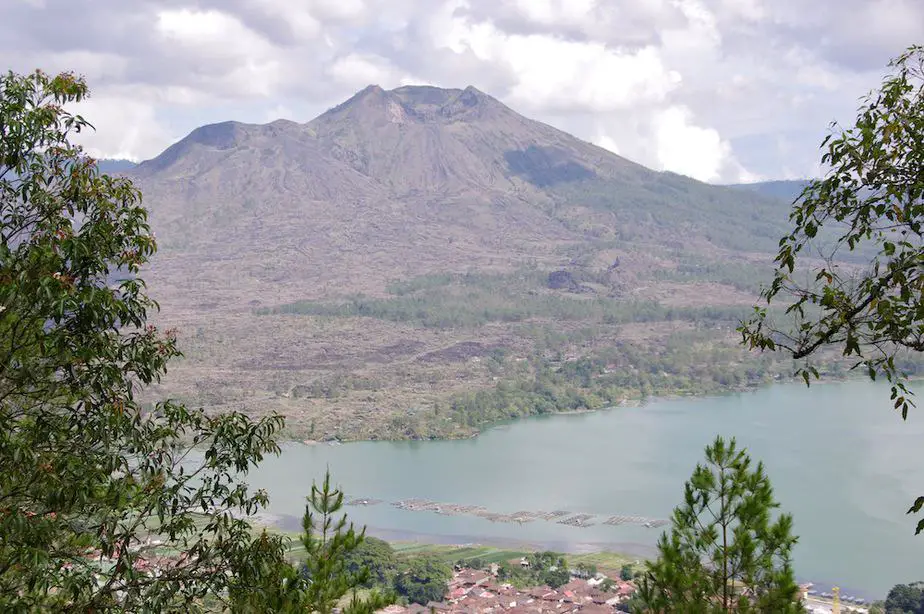Mount Batur is one of the most visited mountains in Bali. Here are 10 facts on Mount Batur which are worth knowing when preparing to visit this mountain. This information comes in handy for climbers but also for non-climbers.
Fact #1. Mount Batur Sits In A Supervolcano
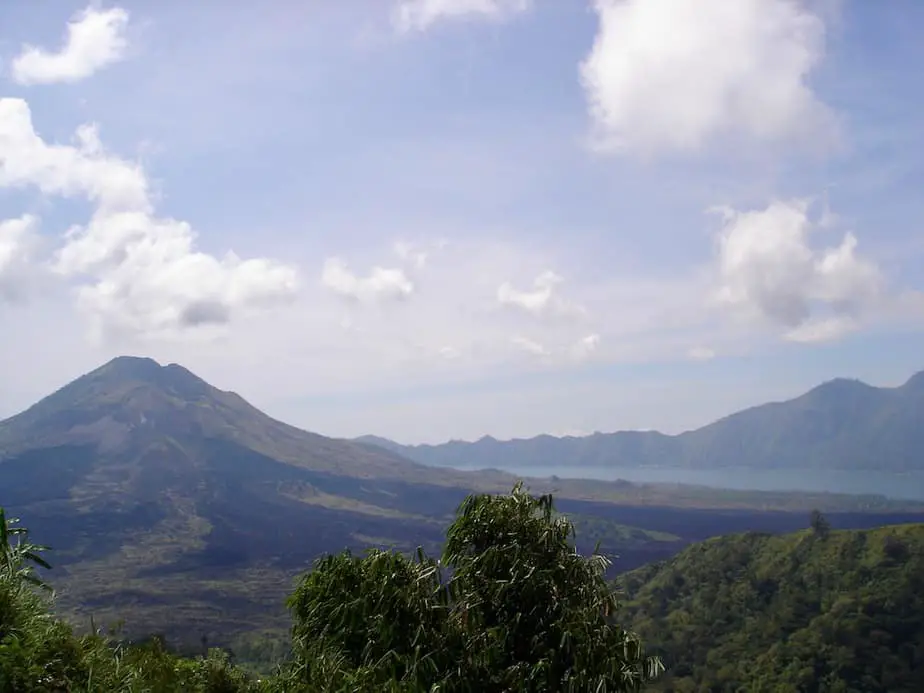
Geologists believe that Mount Batur sits inside a supervolcano which used to be around 3.500m above sea level.
A huge explosion took out most of the mountain which collapsed into an empty magma chamber. This happened around 23.000-29.000 years ago. Not long after the hole was filled with what is now Lake Batur (Danau Batur in Indonesian).
When you stand on the rim of the caldera you can see the remnants of the supervolcano with walls as high as 1,267m and 2.153m. In the middle of the crater, you can find a small active volcano. This one is now called Mount Batur. Her height is 1.717m from sea level and 686m from Lake Batur level.

The caldera is 11km by 13.5km. The highest points on the caldera are Mount Penulisan (1745m) and Mount Abang (2153m). Batur Lake is 7km long, 2.5km wide, and around 60m deep. This is the biggest and most sacred lake in Bali.
Fact #2. Mount Batur Is An Active Volcano

The ‘small’ Mount Batur volcano is an active volcano and you can see steam around its top. Nowadays you can easily see traces of where the lava flowed. On the flanks of the volcano, the people of Batur are trying to grow vegetables.
The eruptions of Mount Batur happened in 1917, 1926, 1959, 1963, 1994, 1999 and the last one was in 2000.
The eruption in 1917 killed 1,372 people, destroyed 2,500 temples and 65,000 houses. Miraculously the lava stopped at the walls of the second most important temple of Bali, the Pura Ulun Danu Batur. This was considered a good omen to the local people.
However, during the 1926 eruption, the temples and villages were completely destroyed.
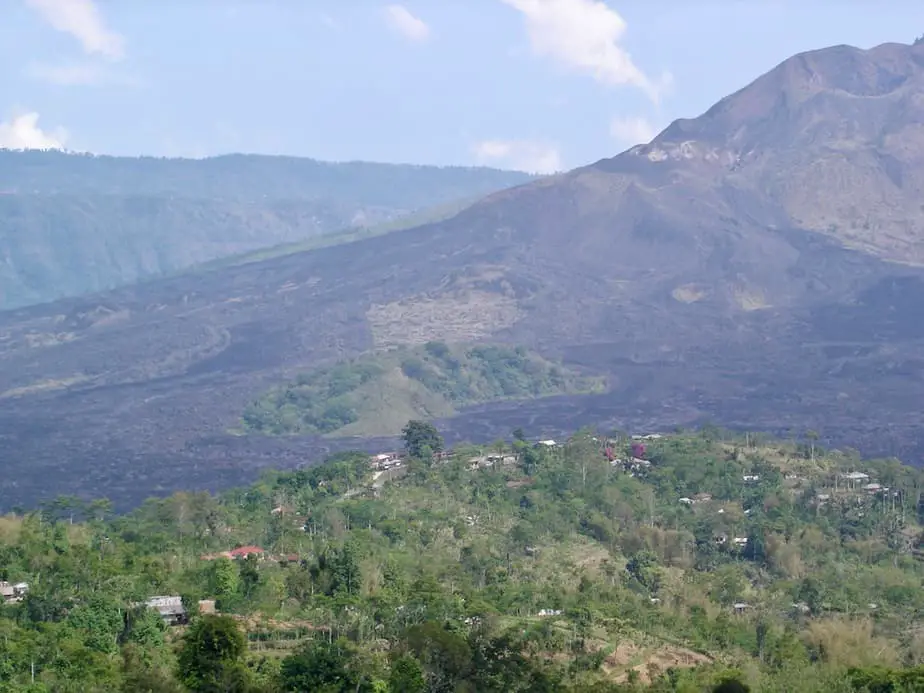
The landscape and its surroundings have been created by the eruptions that took place in 1917, 1926 and 1963. In the past, life mainly evolved down in the crater. The villages of Kintamani and Batur used to be located there too.
So after these dramatic events, the villagers decided to relocate to the rim of the volcano.
When looking at the landscape, you can only imagine what an impact the eruption must have had on the people and the area.
If you want to learn more about the area and the volcano there’s a museum which is called the Batur Geopark Museum. It’s located on the Penelokan main road. The entrance is free.
Fact #3. The Second Most Important Mountain And Temple in Bali
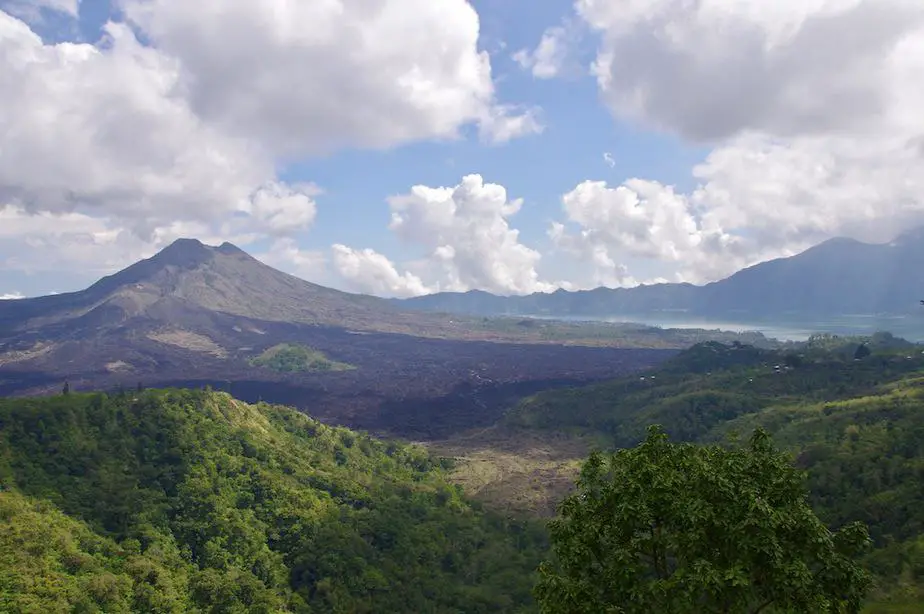
Mount Batur (Gunung Batur in Indonesian) is considered by the Balinese the second most important mountain on the island, after Mount Agung.
The main reason for this is that Mount Batur Lake feeds a network of many rivers, streams, and holy springs in all directions of Bali. It is the source of life for many irrigation systems and groups (subak) which in turn have created those stunning rice terraces Bali is so famous for.
Mount Batur and Lake Batur is home to one of the two most important gods in Bali, Goddess Ida Bhatari Dewi Danu. Through her water, she provides life to Bali.
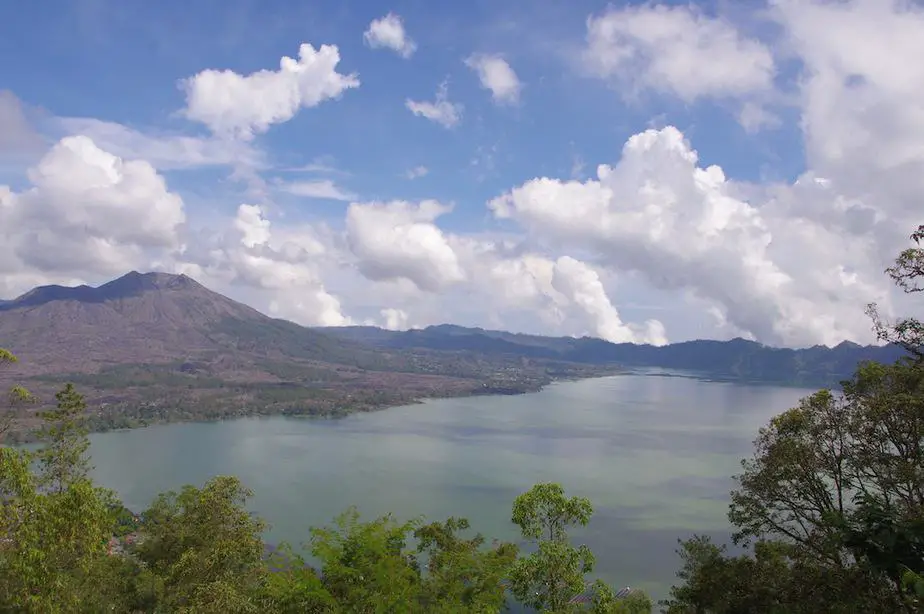
After the eruption of 1926, the Balinese rescued shrines and pieces of the temples in the crater near Pura Jati. They rebuild a new temple on the rim of the caldera, the Pura Ulun Danu Batur, 4km north of Penelokan. The entrance fee to the temple is 10.000 Rph.
This nine-temple complex is now home to more than 200 shrines. In this temple complex, the Balinese people have built a meru (multi-tiered shrine) with eleven roofs in the inner-courtyard. This shows how sacred this place is to the Balinese.
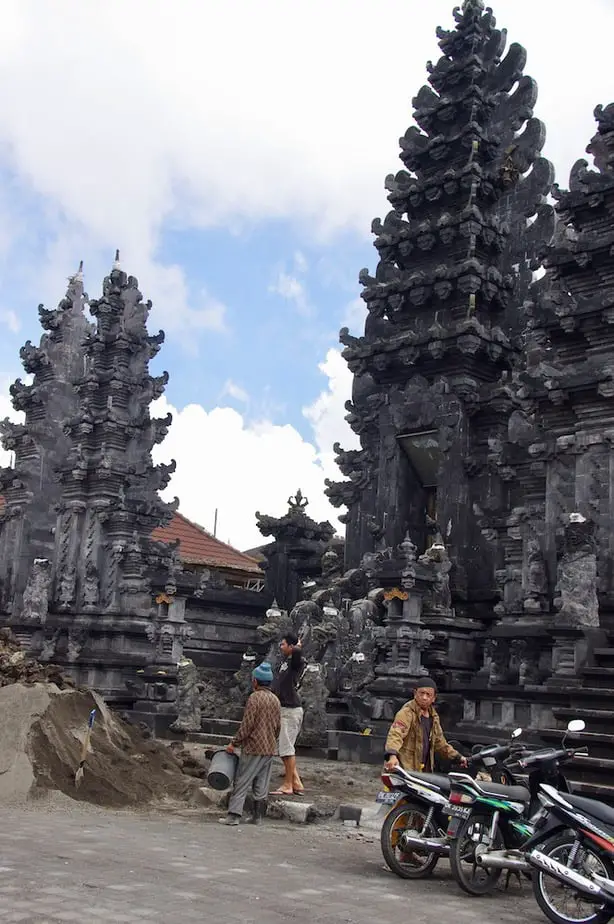
If a village wants to create a new subak (irrigation counsel) so they can build rice terraces they have to ask Goddess Ida Bhatari Dewi Danu first.
Her early representative is called Jero Gede. A virgin priestess chose him and 24 other boys as priests for the temple after going through a trance. The current Jero Gede was chosen when he was only 11 years old. He is the final arbiter of everything concerning water on the island.
Fact #4. Animals Are Drowned To Please the Goddess
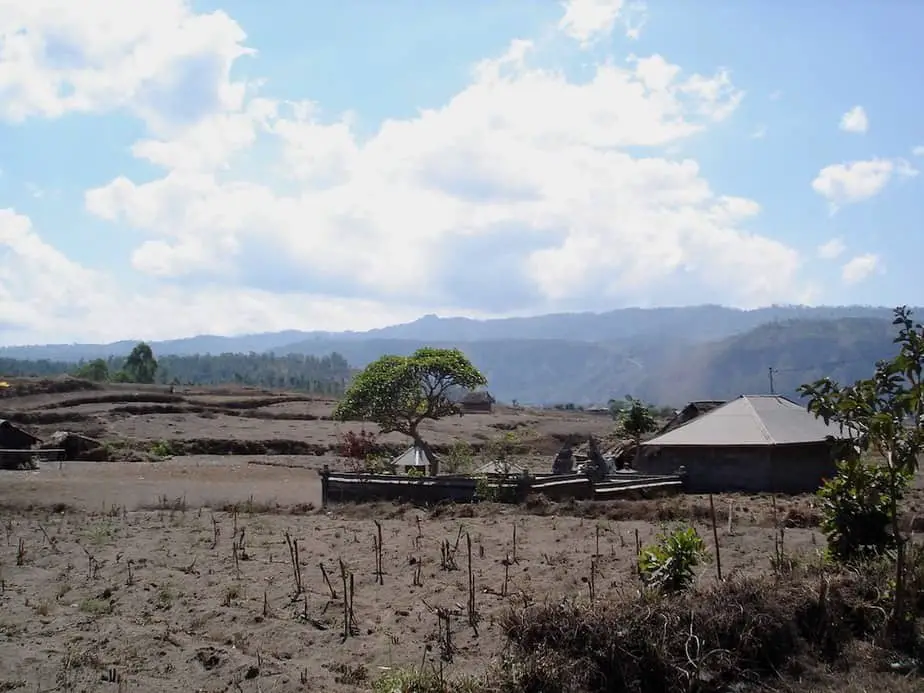
A small road takes you down from Kintamani to the inner crater where it’s hard to grow anything. Just a barren landscape with rocks and some shrubs.
The remaining villages are located on the edge of the lake. They are called Bintang Danu which means Stars of the Lake. These villages mainly cultivate vegetables, fruit, and catch fish.
The lake plays an important role in cultivating their crops; however other villages much further away are also dependent on this deep crater lake as a water source.
Every year the rice farmers from the villages nearby Ubud gather around the lake to offer a buffalo to ensure the lake provides sufficient water and fertility for the next year.
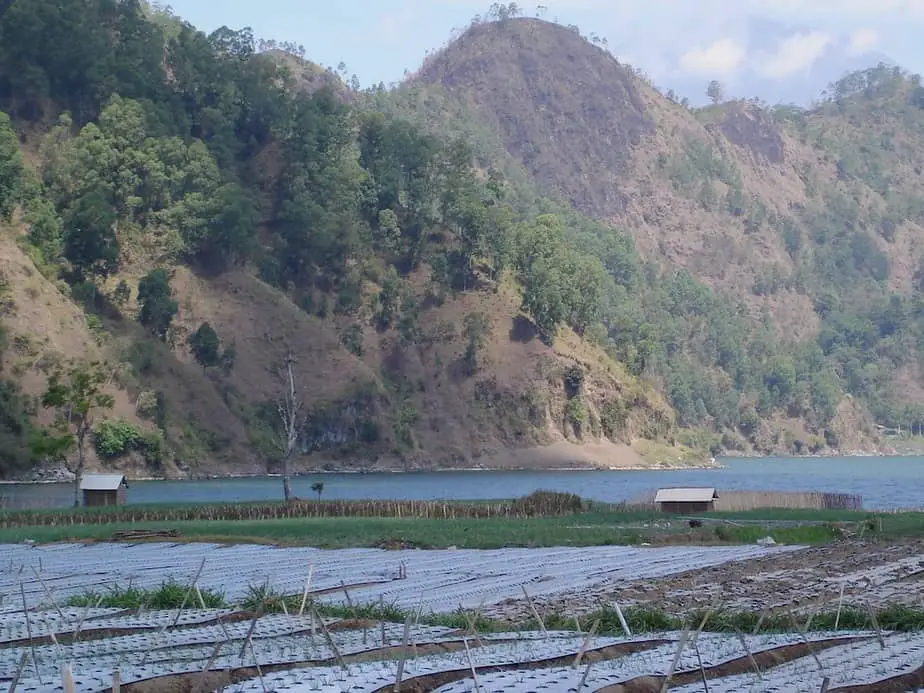
In the northern part of Lake Batur, you can find the village of Songan. This is the place of one of the oldest temples in Bali, the Pura Ulun Danu Batur. It has the same name as the sacred temple on the rim of the volcano.
Every 10 years a ceremony takes place here to honor the Goddes Ida Bhatari Dewi Danu. Chicken, buffaloes, geese, goats, and pigs adorned in gold are drowned in Lake Batur. It is quite clear that swimming and diving in this part of the lake are forbidden.
Fact #5. There Are Several Viewpoints of Mount Batur
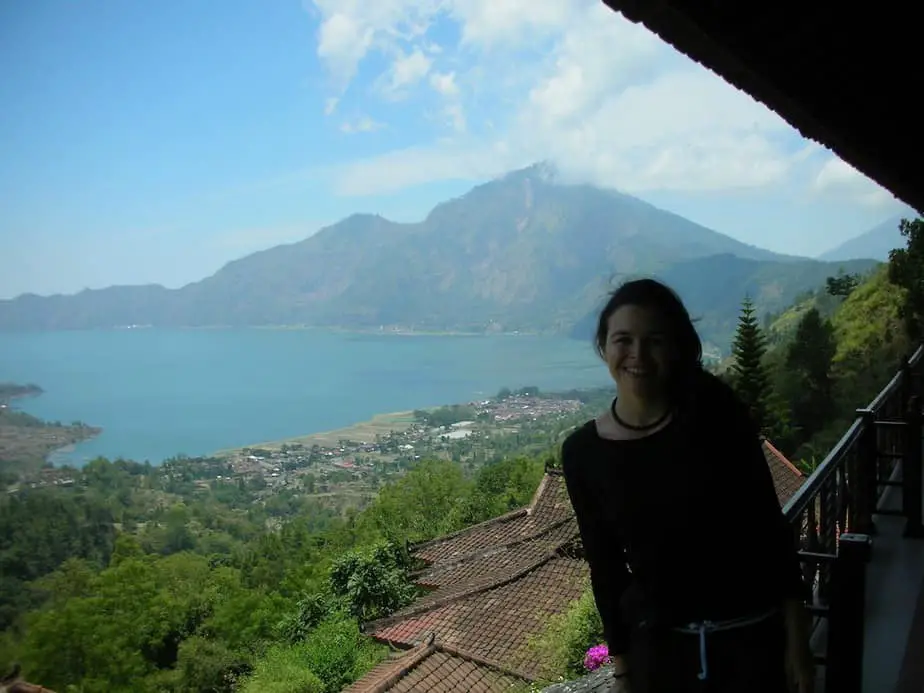
Most visitors come to Mount Batur for the spectacular view of the volcano and the inner crater. The entrance fee to the area is 30.000 Rph per person. Keep the receipt because you might want to drive around for a while.
On a clear day, you can see this active volcano so clearly that it feels like you can reach out and touch it. When you are out of luck, the clouds can cover the whole lake. Then there isn’t much to see. Don’t forget to bring something warm with you as it can get cold too.
The best view is at Penelokan village. This means, ‘place to look’. But basically along the main road all the way to Kintamani you can see the entire Batur Lake (Danau Batur).
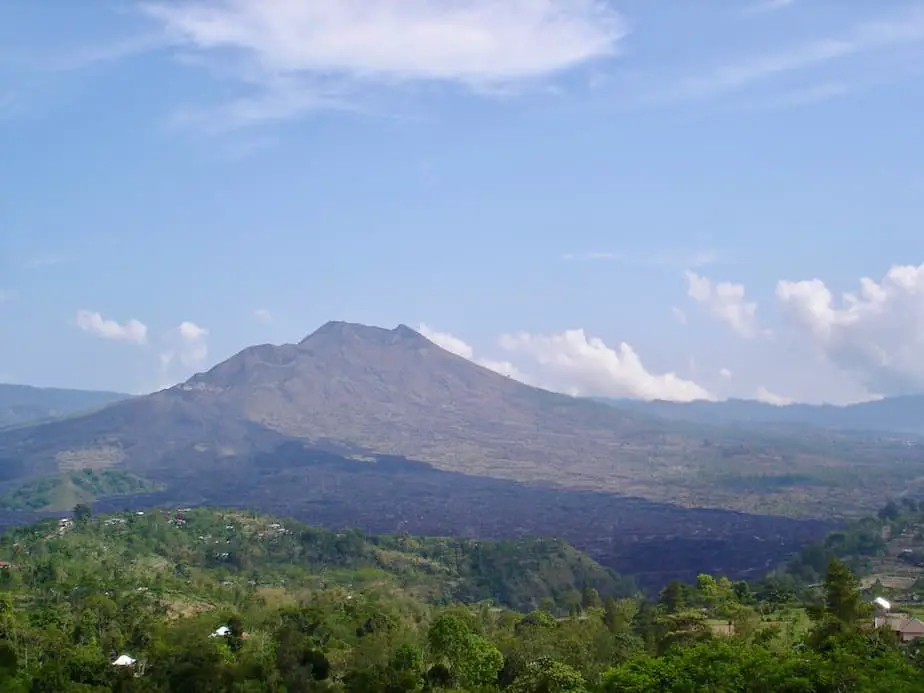
Another excellent lookout point is at Pura Puncak Penulisan in Penulisan, the highest temple in Bali. You can take the 333 steps to the top temple called Pura Panajaron at 1745m. Here you can see rice terraces for kilometers on end plus you can see parts of the north coast.
Fact #6. Expensive Buffet Restaurants on Mount Batur Caldera
You will find plenty of buffet restaurants between Penelokan and Kintamani. They are mainly catered to day-tourists coming from the south of Bali in big busses.
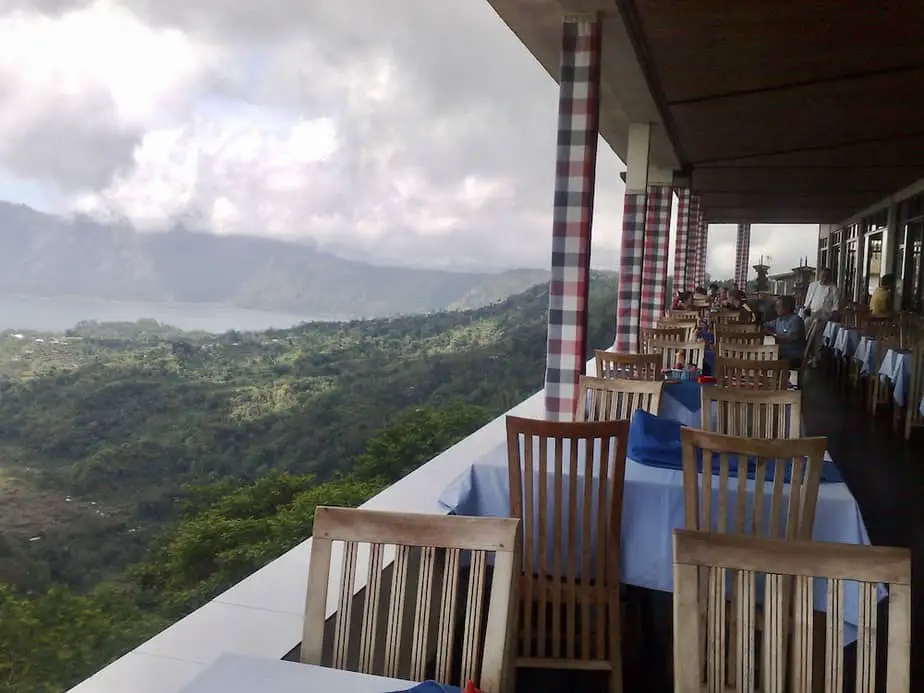
Unfortunately, the food isn’t as good as the view. Most bigger restaurants offer set buffet lunches only, leaving you no choice but to join the queue.
Luckily if you look closely there are also little places that offer simple yet tasty local dishes. Mie Kuah (noodle soup) is a good choice since it can get pretty chilly here.

Fact #7. Pushy Vendors On The Parking Lot
Every day busloads of tourists are coming to Mount Batur and it has attracted numerous vendors too. Same as on the beaches of Kuta. The difference between the ones at Kuta beach and Mount Batur is that on the mountain they are pushy.
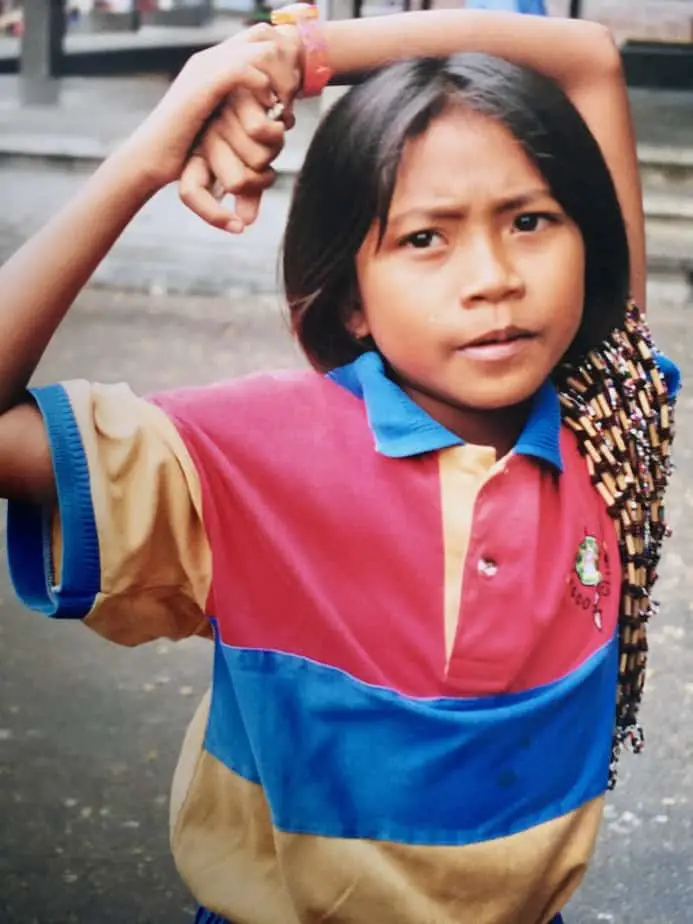
Women will run to the tourist buses carrying dozens of sarongs and T-shirts while children try to sell necklaces and many guides offer to take you to the top of the mountain.
They can be pretty aggressive and their persistence has led to many annoyances among travelers who visit the area. The best thing is to ignore them after kindly stating you don’t want to buy anything. Try to remain respectful considering the sellers are desperate to make a living too.
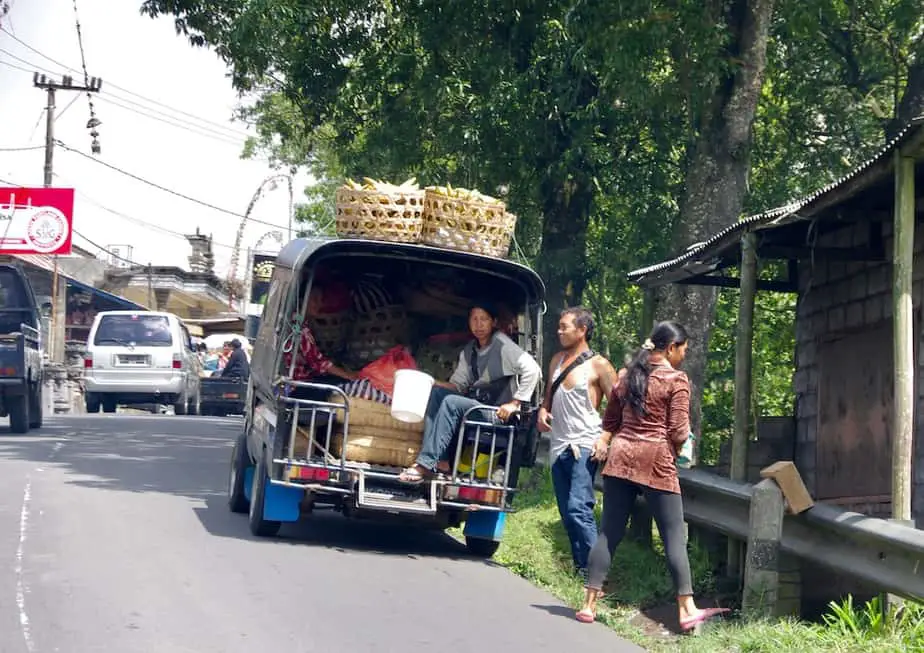
Since the climate is far cooler here than in other parts of the island, you will see little stalls selling produce from the surrounding mountain area such as fruit. If you are early enough then you can also visit the lively Kintamani market, which is held 3 days per week.
Besides vegetables and fruit, there are many street hawkers selling souvenirs too.
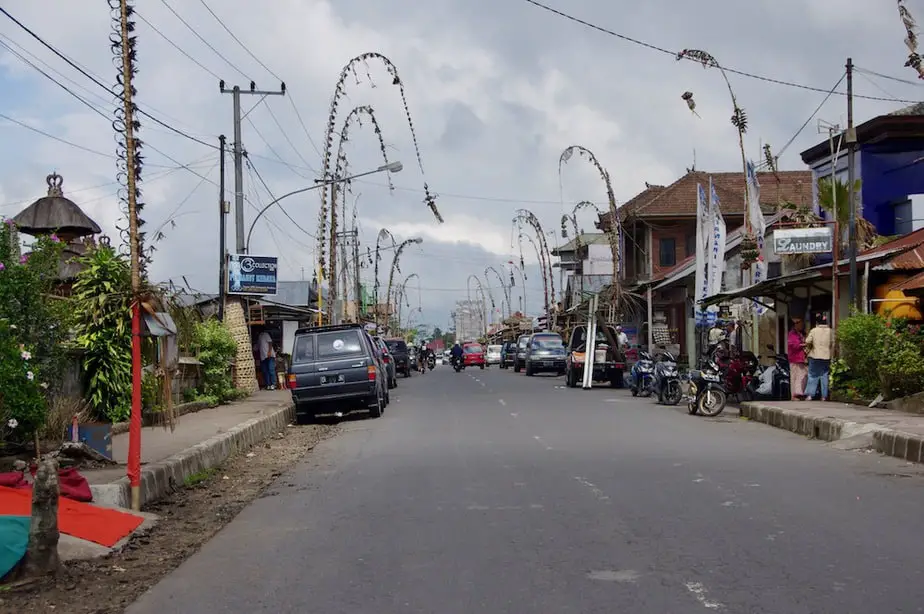
Fact #8. There Are Other Things To Do On Mount Batur
Besides hopping on a big bus or arranging a driver to take you for a quick look, you can also join activities that include a visit to Kintamani and Batur.
You can go on a downhill cycling tour with Bali Baik Tours or Bali Eco Cycling. With C-Bali you can also do a canoe tour on Lake Batur which includes transfer and breakfast.
Another option is the Suntrek Tour combined with white water rafting with Bali Trekking Tour.
And it’s even possible to do some overnight camping in the crater at Mount Batur. You can do this at N’Jung Bali Camp, it’s more glamping than camping but it’s worth it being so quiet and hidden in a corner of Lake Batur.
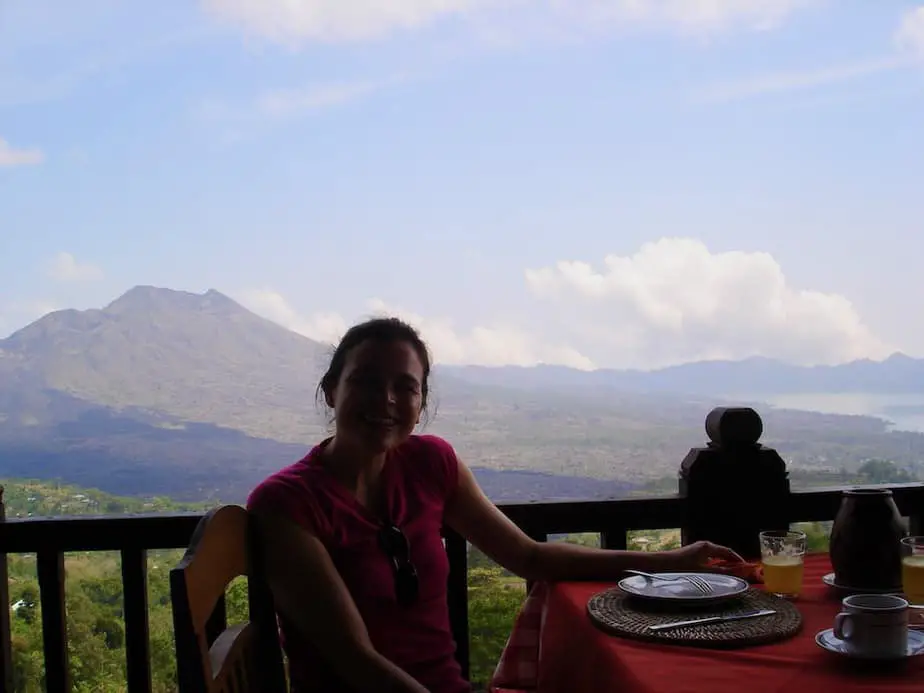
Fact #9. Hiking Mount Batur Is Doable For Beginners
Besides watching the spectacular view from above you can also take the road from Penelokan down to the inner rim. Travelers who plan a longer visit to this volcanic mountain usually go hiking the summit of Mount Batur.
The villages near the lake are an ideal starting point for a sunrise or morning trek to the mountain top.

There are a couple of routes that take you to the tip of the Mount Batur volcano, some longer than others.
The first route can be taken from Kintamani. There is a road leading from this village that ends close to the top of the mountain. From there, you need to walk a bit.
For clothing bring good hiking shoes, long pants, socks, a sweater, a wind jacket, and an extra T-shirt. Don’t forget to also pack a flashlight, sunscreen, water, and some snacks.
The difficulty level of Mount Batur depends on what you are used to but even for beginners with the proper gear, this is very doable. Some parts of the trail can get slippery because of the volcanic sand and rocks so be careful.
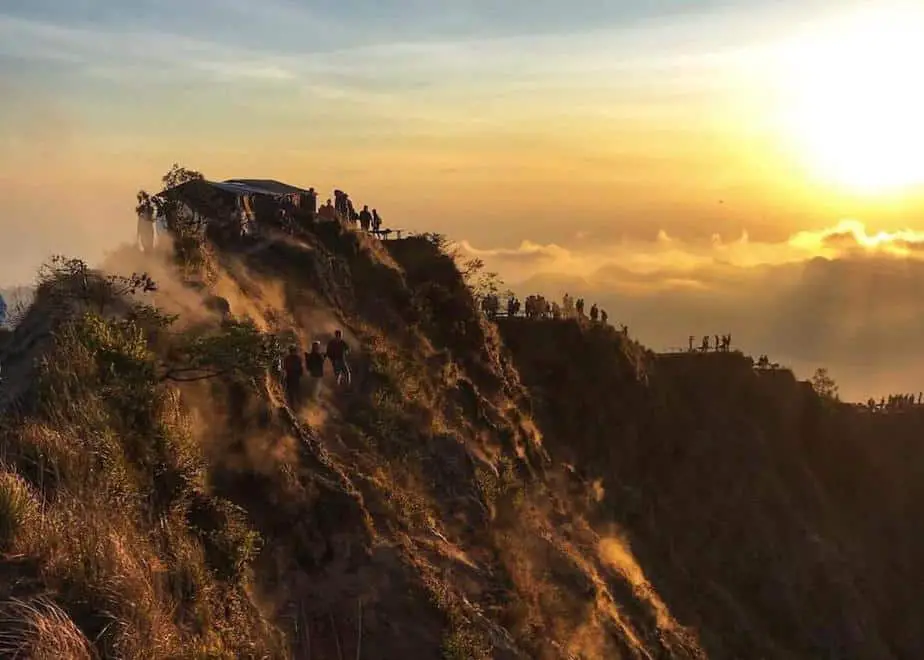
Active hikers will enjoy climbing this mountain from the starting point located near the lake. You can choose the shortest trail (2h up, 1,5h down) from Purajati which is located on the west side of the lake.
You can also choose the somewhat longer trail starting from Toyabungkah village, located a bit further from Purajati.
The latter is the most popular trek to the summit but either way, if you leave just before 4 am you will be rewarded with an amazing sunrise.
Another option is the trek along the rim of the crater with parts that are even higher than Mount Batur.
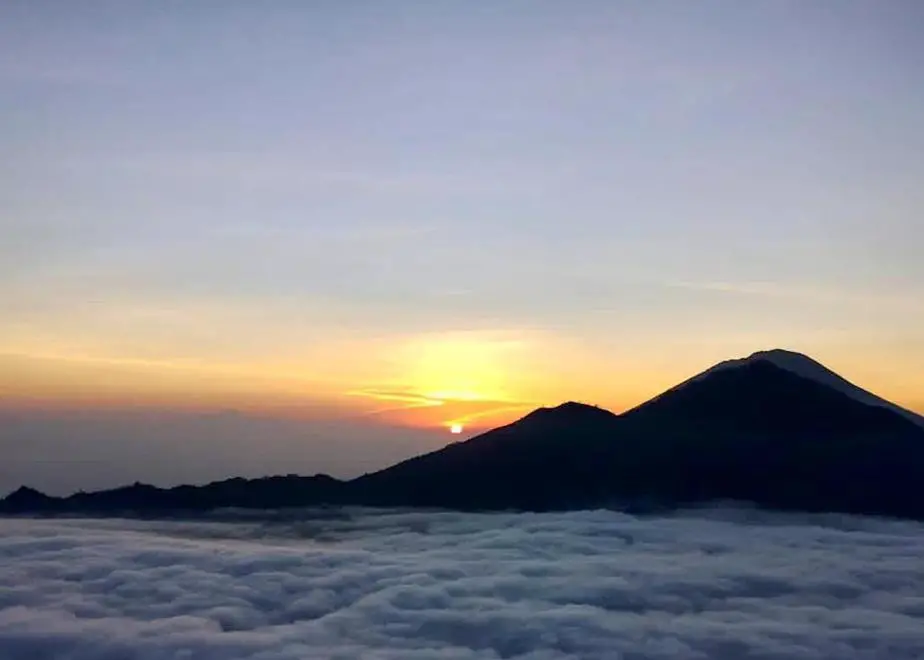
What we recommend is to book an organized tour from any of the agencies in Ubud, Sanur, Seminyak, or wherever you are staying. There are plenty of options online too.
This way you don’t have to have to deal with the Association of Mount Batur Trekking Guides. They are located in Toyabungkah and have a monopoly on climbing Mount Batur. These lads are not the most friendly ones, especially when you want to negotiate. Therefore it’s best to arrange it beforehand.
If you arrive without an organized tour and you want to go trekking around the area then it is best to ask your accommodation or homestay for a guide. They know the fees of the local guides so you don’t need to negotiate a price.
Hiking Mount Batur without a guide is not allowed by the Association of Mout Batur Trekking Guides.
Fact #10. Mount Batur Natural Hot Springs
After a hike (you can also skip the hike of course 😉 you can head to the Toya Bungkah hot springs to relax the aching muscles. The mineral spring water flows into the various pools that range from 37 degrees Celsius and 43 degrees Celsius.
There are two hot spring places sitting next to each other. The one we recommend is the Batur Natural Hot Spring. The other is called Toya Devasya Natural Hot Spring Wellness Resort but this one is tacky and often crowded.
Keep in mind that on the weekend’s many locals and other Indonesian tourists come here.
Fact #11. Bones And Skulls At Trunyan Village

While hiking is the main activity here, you can also opt to visit the little village of Trunyan located along the eastern shore of the inner caldera.
Just like the Bali Aga village Tenganan near Candidasa, the villages of Trunyan are considered the first descendants of Bali.
However, the Bali Aga of Trunyan are very poor compared to the villagers in Tenganan as the village is located beneath the steep slopes of the volcano which makes that little bit of agriculture almost impossible.
An interesting aspect of the Bali Aga of Trunyan is that they do not cremate their dead like the other parts of Bali. Instead, the remains of the deceased are placed slightly covered by rattan under a big banyan tree for the birds and wild animals to eat.
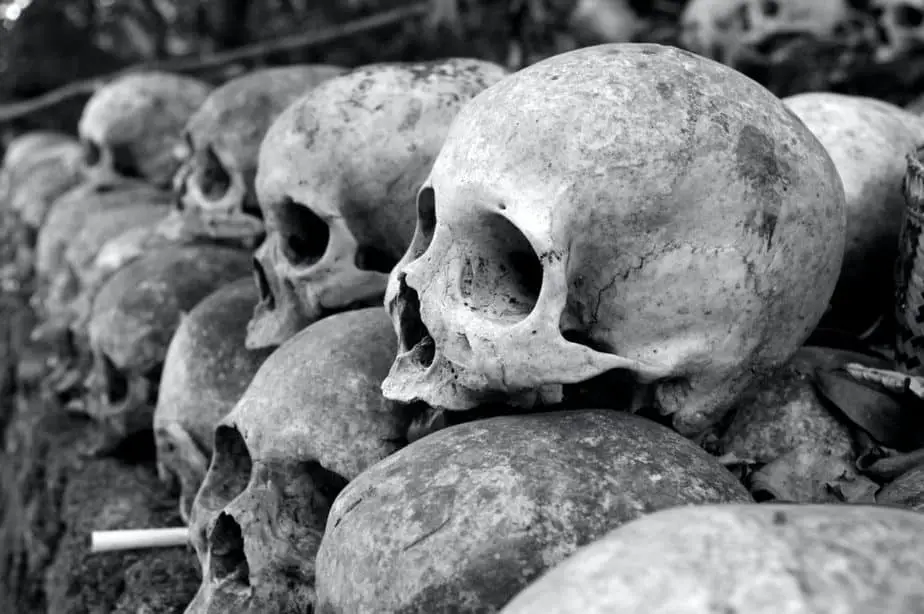
After a while, all that can be found are the skulls and bones. The Bali Aga believe that the birds will take the deceased soul with them to heaven and so encourages reincarnation. The bodies are also placed under the banyan tree for a very good reason as the trees obscure the smell of decay.
In the past Trunyan was pretty isolated and the Aga people were weary for outsiders. However, today there is even a road connecting the village with the outside world.
If you want to visit, best to arrange a guide to take you since the villagers are pretty isolated and might not greet you with a big smile, like they would in the rest of Bali.

